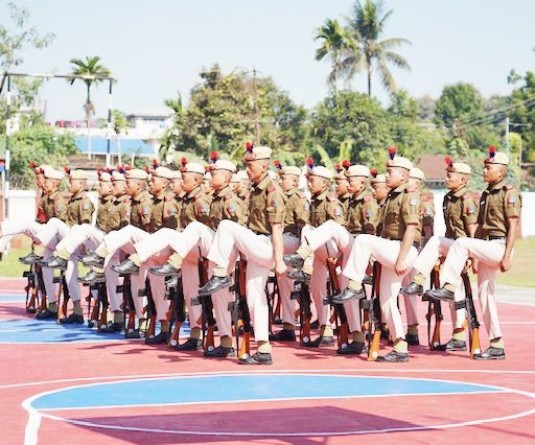
Morung Express News
Dimapur | March 20
The Supreme Court, on May 20, has declined to inferred with a judgement passed by the Gauhati High Court Kohima Bench on March 16, 2022 directed the Nagaland State Government to pay salaries to a batch of teachers employed under the Rashtriya Madhyamik Shiksha Abhiyan (RMSA) in parity with their counterparts.
“We are not inclined to interfere with the impugned judgment and order of the High Court; hence, the special leave petition is dismissed,” stated the order by Justices Dipankar Datta and K Vinod Chandran.
Case background
In December 2013, the RMSA advertised 951 posts for teachers and sports instructors. A subsequent notification on October 28, 2015, sanctioned 627 posts of Graduate Teachers in the Pay Band of Rs 9300–34,800 with Grade Pay of Rs 4200.
After the recruitment process, 528 candidates were appointed in November 2015 on a fixed monthly pay of Rs 31,315, and another 111 in May 2016 under the same terms. The appointments were contractual, and all appointees signed a bond acknowledging this.
Meanwhile, the Union Ministry of Human Resource Development decided to merge SSA, RMSA, and TE teachers under one umbrella—Samagra Shiksha—effective April 3, 2018.
A draft framework sent on April 5, 2018, fixed the salary of Secondary School teachers at Rs 25,000 per month.
Following this, an Office Memorandum (OM) was issued by the State Government on August 17, 2018 reducing the salaries of the petitioners. A corrigendum the next day gave them one month to comply, and a further notice on August 27, 2018, warned of action under the Nagaland Government Servants Rules, 1968.
The affected teachers challenged the three notifications in the High Court besides seeking a direction from the Court to the State Government to provide the petitioners their post creation pay band.
In a judgement order on May 5, 2020, the Single Judge set aside three OMs but it rejected the petitioners’ prayer for payment according to the sanctioned pay band.
Subsequently, the teachers approached a Division Bench challenging the rejection of the scale of pay.
On March 16, 2022, a Division Bench of Justice Devashis Baruah and Justice Arun Dev Choudhury ruled in their favour, directing the State to grant the pay scale of Rs 9300–34,800 with Grade Pay of Rs 4200.
The court upheld the principle of equal pay for equal work, observing that the petitioners were “equally placed in all respect” with their counterparts. It held that parity could be claimed when the eligibility, selection mode, work quality, duties, responsibilities, and status were identical.
The petitioners argued that the 2015 notification had sanctioned their posts with regular pay scale and that other similarly appointed teachers under SSA and RMSA—both before and after their appointments—were being paid accordingly.
They also contended that the State Cabinet, on October 3, 2018, merged all SSA and RMSA teachers into Samagra Shiksha as State cadre, excluding only the petitioners through an OM issued on October 5. This, they claimed, created two classes of similarly situated employees.
The State, in its defence, argued that the appointment orders had clearly stated the contractual nature and fixed salary. It claimed that the other teachers were appointed via separate advertisements by the Education Department, which stipulated permanent nature and scale of pay.
However, the High Court found that the petitioners and their counterparts, among others, performed identical duties, were recruited through similar selection processes, and posted in the same schools teaching similar students.
A comparative evaluation, the Bench said, left “no option but to hold that the petitioners are entitled for similar scales of pay like their counterparts.” It ruled that “it will not be permissible for the State respondents to treat the two classes of teachers differently.”
The court also cited the Supreme Court judgment in State of Punjab & Others vs Jagjit Singh & Others (2017) that “An employee engaged for the same work cannot be paid less than another who performs the same duties and responsibilities... Such an action besides being demeaning, strikes at the very foundation of human dignity.”
Accordingly, the Division Bench observed that the Single Judge’s earlier decision failed to appreciate the fact that the petitioners and their counterparts are “equally placed and there is wholesome equality between them.”
Hence, it held that petitioners are entitled for scales of pay as pleaded and directed the State respondents to “grant such scales of pay to the petitioners forthwith.”
However, the Division Bench clarified that it was not adjudicating the issue concerning the State Government’s decision to bring other teachers, excluding the petitioners, under the State cadre with associated benefits, including the National Pension System (NPS), as the matter was not challenged in the writ petition.






